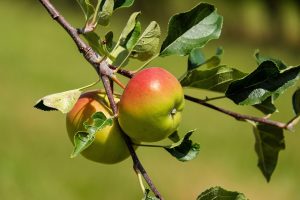Stedelijke tuinieren: kleine ruimtes groots benutten
9 min gelezen
Urban gardening is the practice of growing plants, vegetables, and herbs in urban areas such as cities and towns. It is a way for individuals to connect with nature and cultivate their own food, even in limited spaces. In today’s society, where access to fresh produce is becoming increasingly difficult and the importance of sustainable living is emphasized, urban gardening has gained popularity. It not only provides individuals with a source of fresh and healthy food but also offers numerous benefits for the environment and personal well-being.
The Benefits of Urban Gardening
One of the main benefits of urban gardening is improved air quality. Plants naturally absorb carbon dioxide and release oxygen through the process of photosynthesis. By having more plants in urban areas, the air becomes cleaner and fresher, reducing pollution levels. This is especially important in cities where air pollution is a major concern.
Another benefit of urban gardening is the access to fresh produce. In many urban areas, it can be difficult to find affordable and fresh fruits and vegetables. By growing your own food, you have control over what you eat and can ensure that it is free from harmful pesticides and chemicals. This not only improves your health but also saves money in the long run.
Urban gardening also promotes increased physical activity. Gardening requires physical effort such as digging, planting, and watering, which can help individuals stay active and fit. It is a great way to incorporate exercise into your daily routine without having to go to a gym or engage in intense workouts.
Furthermore, urban gardening has been shown to reduce stress levels. Spending time in nature and engaging in gardening activities has a calming effect on the mind and body. It allows individuals to disconnect from the fast-paced urban lifestyle and find solace in nurturing plants and watching them grow.
Creative Solutions for Small Spaces
For those living in small apartments or houses with limited outdoor space, there are creative solutions for urban gardening. Container gardening is a popular method where plants are grown in pots or containers. This allows individuals to have a garden on their balcony, patio, or even indoors. It is a versatile and flexible option that can be easily moved around.
Vertical gardening is another solution for small spaces. It involves growing plants vertically on walls or structures, utilizing the vertical space instead of the horizontal space. This can be done using trellises, hanging baskets, or wall-mounted planters. Vertical gardening not only maximizes space but also adds a decorative element to the urban environment.
Window boxes are also a great option for urban gardening. They can be attached to windowsills or balconies and are perfect for growing herbs, flowers, or small vegetables. Window boxes are easy to maintain and add a touch of greenery to urban spaces.
Choosing the Right Plants and Vegetables
When starting an urban garden, it is important to choose the right plants and vegetables that are suitable for your specific environment. Factors to consider include the amount of sunlight your space receives, the temperature, and the available space.
Some of the best vegetables for urban gardening include tomatoes, lettuce, peppers, and herbs such as basil and parsley. These plants are relatively easy to grow and do not require a lot of space. They can be grown in containers or small raised beds.
Soil quality is also crucial for successful urban gardening. It is important to use nutrient-rich soil that drains well and retains moisture. Adding compost or organic matter to the soil can improve its fertility and structure. Regularly testing the pH level of the soil is also recommended to ensure optimal growing conditions for your plants.
Vertical Gardening: The Solution for Limited Space
Vertical gardening is a popular technique used in urban gardening to maximize space and grow more plants in limited areas. It involves growing plants vertically on walls, fences, or structures using various methods such as trellises, hanging baskets, or wall-mounted planters.
One of the main benefits of vertical gardening is that it allows individuals to grow more plants in a smaller area. By utilizing the vertical space, you can have a thriving garden even in a small balcony or patio. It is also a great solution for those living in apartments or houses with limited outdoor space.
There are various types of plants that are suitable for vertical gardening. Vining plants such as tomatoes, cucumbers, and beans are ideal as they naturally climb and can be trained to grow vertically. Other options include herbs, flowers, and even small fruit trees. It is important to choose plants that are compatible with your specific environment and growing conditions.
Sustainability in Urban Gardening

Sustainability is an important aspect of urban gardening. It involves practicing methods that are environmentally friendly and promote long-term viability. By adopting sustainable practices, individuals can reduce their carbon footprint and contribute to a healthier planet.
Composting is one of the key sustainable practices in urban gardening. It involves recycling organic waste such as food scraps, leaves, and grass clippings into nutrient-rich compost. Compost can be used as a natural fertilizer for plants, reducing the need for chemical fertilizers and promoting healthy soil.
Another sustainable practice is the use of rainwater. Collecting rainwater in barrels or containers allows individuals to water their plants without relying on tap water. Rainwater is free from chemicals such as chlorine and fluoride, making it beneficial for plants. It also reduces water consumption and helps conserve this precious resource.
The Importance of Water Management in Urban Gardens
Water management is crucial in urban gardens to ensure the efficient use of water and prevent wastage. With limited access to water in urban areas, it is important to adopt water conservation techniques and implement effective irrigation systems.
One of the key water conservation techniques is mulching. Mulch is a layer of organic material such as wood chips or straw that is spread on the soil surface around plants. It helps retain moisture in the soil, reducing the need for frequent watering. Mulching also suppresses weed growth and improves soil fertility.
Installing an irrigation system is another effective way to manage water in urban gardens. Drip irrigation systems deliver water directly to the roots of plants, minimizing evaporation and ensuring that water is used efficiently. This method also reduces the risk of overwatering and helps prevent diseases caused by excessive moisture.
Rainwater harvesting is another important aspect of water management in urban gardens. Collecting rainwater in barrels or containers allows individuals to have a sustainable source of water for their plants. It reduces reliance on tap water and helps conserve this valuable resource.
Urban Gardening for Beginners: Where to Start?
If you are new to urban gardening, it can be overwhelming to know where to start. Here are some tips to help you get started:
1. Choose the right location: Assess your available space and determine the best location for your garden. Consider factors such as sunlight, accessibility, and protection from wind or extreme weather conditions.
2. Select the right plants: Choose plants that are suitable for your specific environment and growing conditions. Consider factors such as sunlight requirements, temperature tolerance, and space availability.
3. Gather basic gardening tools: Invest in essential gardening tools such as a trowel, pruners, gloves, and a watering can or hose. These tools will help you with planting, pruning, and maintaining your garden.
Tips for Maintaining Urban Gardens
Maintaining an urban garden requires regular care and attention. Here are some tips to help you keep your garden healthy and thriving:
1. Regular watering: Water your plants regularly, especially during hot and dry periods. Check the moisture level of the soil and adjust your watering schedule accordingly.
2. Pruning and trimming: Regularly prune and trim your plants to promote healthy growth and prevent overcrowding. Remove dead or diseased leaves and branches to maintain the overall health of your garden.
3. Pest control: Monitor your plants for pests and take appropriate measures to control them. Use organic pest control methods whenever possible to minimize the use of harmful chemicals.
How Urban Gardening Can Contribute to a Healthier Lifestyle
Urban gardening can contribute to a healthier lifestyle in several ways:
1. Access to fresh produce: By growing your own food, you have access to fresh and healthy produce that is free from harmful pesticides and chemicals. This can improve your overall health and well-being.
2. Increased physical activity: Gardening requires physical effort such as digging, planting, and watering, which can help individuals stay active and fit. It is a great way to incorporate exercise into your daily routine without having to go to a gym or engage in intense workouts.
3. Reduced stress levels: Spending time in nature and engaging in gardening activities has a calming effect on the mind and body. It allows individuals to disconnect from the fast-paced urban lifestyle and find solace in nurturing plants and watching them grow.
Urban Gardening as a Social Activity: The Benefits of Community Gardens
Community gardens are shared spaces where individuals come together to grow plants, vegetables, and herbs. They offer numerous benefits as a social activity:
1. Building community relationships: Community gardens provide opportunities for individuals to connect with their neighbors and build relationships. It fosters a sense of community and encourages collaboration and cooperation.
2. Sharing knowledge and resources: Community gardens are a great platform for sharing knowledge, skills, and resources related to gardening. Experienced gardeners can mentor beginners and share tips and techniques for successful gardening.
3. Access to larger gardening spaces: Community gardens often have larger spaces available for gardening compared to individual urban gardens. This allows individuals to grow a wider variety of plants and vegetables and experiment with different gardening techniques.
Urban gardening is a valuable practice that offers numerous benefits for individuals and the environment. It provides access to fresh produce, improves air quality, promotes physical activity, and reduces stress levels. With creative solutions for small spaces such as container gardening and vertical gardening, even those living in urban areas can enjoy the benefits of gardening. By choosing the right plants, practicing sustainable methods, and managing water effectively, individuals can create thriving urban gardens. Whether you are a beginner or an experienced gardener, urban gardening is a rewarding activity that can contribute to a healthier lifestyle and foster community relationships. So why not start your own urban garden today?
Een interessant artikel dat aansluit bij het onderwerp “Stedelijke tuinieren: kleine ruimtes groots benutten” is “Licht en schaduw: hoe je verlichting kiest voor je woonkamerdecor“. Dit artikel op Research Career biedt waardevolle inzichten en tips over het kiezen van de juiste verlichting om een sfeervolle en functionele woonkamer te creëren. Of je nu een kleine stedelijke tuin hebt of een compacte woonruimte, het optimaliseren van de verlichting kan een groot verschil maken in de algehele uitstraling en functionaliteit van de ruimte.
FAQs
Wat is stedelijk tuinieren?
Stedelijk tuinieren is het verbouwen van groenten, fruit en kruiden in kleine ruimtes in de stad, zoals balkons, daken en gemeenschappelijke tuinen.
Waarom is stedelijk tuinieren belangrijk?
Stedelijk tuinieren is belangrijk omdat het bijdraagt aan een duurzamere en gezondere levensstijl. Het verbouwen van eigen groenten en fruit zorgt voor minder voedselverspilling en minder transport van voedsel. Daarnaast is het ook goed voor de biodiversiteit in de stad en kan het zorgen voor een betere luchtkwaliteit.
Welke planten zijn geschikt voor stedelijk tuinieren?
Planten die geschikt zijn voor stedelijk tuinieren zijn bijvoorbeeld tomaten, sla, kruiden, aardbeien en paprika’s. Het is belangrijk om te kijken naar de grootte van de plant en de hoeveelheid zonlicht die de plant nodig heeft.
Wat zijn de voordelen van stedelijk tuinieren?
De voordelen van stedelijk tuinieren zijn onder andere dat het zorgt voor een duurzamere en gezondere levensstijl, het kan zorgen voor een betere luchtkwaliteit en het kan bijdragen aan de biodiversiteit in de stad. Daarnaast kan het ook zorgen voor een gevoel van verbondenheid tussen buurtbewoners.
Hoe kan ik beginnen met stedelijk tuinieren?
Om te beginnen met stedelijk tuinieren heb je niet veel ruimte nodig. Een balkon of een vensterbank is al voldoende. Het is belangrijk om te kijken naar de hoeveelheid zonlicht die de planten nodig hebben en om te zorgen voor voldoende water en voeding. Er zijn ook verschillende cursussen en workshops beschikbaar om meer te leren over stedelijk tuinieren.






